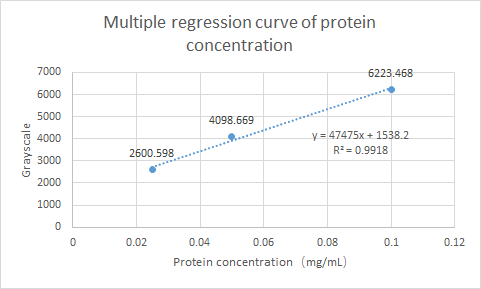Difference between revisions of "Part:BBa K3100017"
| Line 4: | Line 4: | ||
| − | <strong>Usage and Biology:</strong> | + | <h2><strong>Usage and Biology:</strong><h2> |
GadB is an acid tolerant factor which play an important role in the acid tolerance of E.coli MG1655.The decarboxylation of glutamate consumes a proton, and therefore, micro‐organisms take advantage of this property to remove protons from the intracellular milieu under acidic conditions[1]. GadB is involved in the AR system, which is the glutamic acid-dependent acid resistance (GDAR) system, consisting of the homologous inducible glutamic acid decarboxylases GadA/GadB enzymes and the glutamate/γ-aminobutyric acid (GABA) antiporter GadC[2]. | GadB is an acid tolerant factor which play an important role in the acid tolerance of E.coli MG1655.The decarboxylation of glutamate consumes a proton, and therefore, micro‐organisms take advantage of this property to remove protons from the intracellular milieu under acidic conditions[1]. GadB is involved in the AR system, which is the glutamic acid-dependent acid resistance (GDAR) system, consisting of the homologous inducible glutamic acid decarboxylases GadA/GadB enzymes and the glutamate/γ-aminobutyric acid (GABA) antiporter GadC[2]. | ||
Revision as of 13:39, 21 October 2019
gadB (antiacid gene)
Usage and Biology:<h2>
GadB is an acid tolerant factor which play an important role in the acid tolerance of E.coli MG1655.The decarboxylation of glutamate consumes a proton, and therefore, micro‐organisms take advantage of this property to remove protons from the intracellular milieu under acidic conditions[1]. GadB is involved in the AR system, which is the glutamic acid-dependent acid resistance (GDAR) system, consisting of the homologous inducible glutamic acid decarboxylases GadA/GadB enzymes and the glutamate/γ-aminobutyric acid (GABA) antiporter GadC[2].
Characterization:
We have expressed this gene and tested its influence on the acid tolerance of E.coli MG1655-T7 RNAP (MGR). T7 RNA polymerase was integrated into the genome of E. coli MG1655(MG) to test our VerProS system.
The functional gene gadB was constructed on plasmid pET30a(+) and the plasmid was transformed into MGR. IPTG(0.2 mM) was added to induce the expression of the protein. Inoculated the MGR with pET30a(+)-gadB in 10ML LB medium,37 ℃,250rpm for 12 hours,and then 1:100 transferred it to 12.5ml medium with IPTG (0.2 mM) for 18 hours. The following is the picture of SDS-PAGE (Fig.1) which shows that target protein has been expressed successfully.
Fig.1 The SDS-PAGE of gadB and ybaS
What’s more, we have tested the Protein expression of gadB. Using ImageJ for gray scale comparison, the multiple regression curve was drawn with the BSA of 0.0125m to 0.1m as the reference, as follow figure:
Fig.2 Multiple regression curve of protein concentration
Finally, the expression of gadB was calculated as 0.0342 mg/ml.
The last, we have tested its influence on the acid tolerance of MGR. MG, MGR and MGR expressing gadB were grown overnight (about 16 h) in LBG medium of pH 7.0 at 37 °C. The cultures were then diluted to initial OD600 0.05 in 300 μL LBG medium of pH 7.0, LBG medium acidified by HCl or succinic acid to pH 4.5. Then the cultures were incubated at 37 °C in 100-well Honeycomb microplates using an automated turbidimeter (Bioscreen C, Oy Growth Curves Ab Ltd., Helsinki, Finland) for online monitoring of OD600 for 24 h.
A growth assay under moderate acid stress were performed to investigate the effect of overexpression gadB or not on acid tolerance. Under moderate acid stress, the final OD600 value of strain MGR-gadB(the strain overexpressing gadB) was 44.2% higher than that of the wild type strain (MG) (Fig. 3).
Fig.3 Growth of strains MG,MGR and MGR-gadB under acid stress.
References:
[1] Feehily C, Karatzas KAG. Role of glutamate metabolism in bacterial responses towards acid and other stresses. J Appl Microbiol. 2013;114:11–24. doi: 10.1111/j.1365-2672.2012.05434.x.
[2] Kanjee U, Houry WA. Mechanisms of acid resistance in Escherichia coli. Annu Rev Microbiol. 2013;67:65–81. 10.1146/annurev-micro-092412-155708
Sequence and Features
Assembly Compatibility:
- 10INCOMPATIBLE WITH RFC[10]Illegal EcoRI site found at 988
Illegal PstI site found at 440
Illegal PstI site found at 1360
- 12INCOMPATIBLE WITH RFC[12]Illegal EcoRI site found at 988
Illegal PstI site found at 440
Illegal PstI site found at 1360
- 21INCOMPATIBLE WITH RFC[21]Illegal EcoRI site found at 988
- 23INCOMPATIBLE WITH RFC[23]Illegal EcoRI site found at 988
Illegal PstI site found at 440
Illegal PstI site found at 1360
- 25INCOMPATIBLE WITH RFC[25]Illegal EcoRI site found at 988
Illegal PstI site found at 440
Illegal PstI site found at 1360
Illegal AgeI site found at 700
- 1000COMPATIBLE WITH RFC[1000]
What’s more, we have tested the Protein expression of gadB. Using ImageJ for gray scale comparison, the multiple regression curve was drawn with the BSA of 0.0125m to 0.1m as the reference, as follow figure:
Sequence and Features
- 10INCOMPATIBLE WITH RFC[10]Illegal EcoRI site found at 988
Illegal PstI site found at 440
Illegal PstI site found at 1360 - 12INCOMPATIBLE WITH RFC[12]Illegal EcoRI site found at 988
Illegal PstI site found at 440
Illegal PstI site found at 1360 - 21INCOMPATIBLE WITH RFC[21]Illegal EcoRI site found at 988
- 23INCOMPATIBLE WITH RFC[23]Illegal EcoRI site found at 988
Illegal PstI site found at 440
Illegal PstI site found at 1360 - 25INCOMPATIBLE WITH RFC[25]Illegal EcoRI site found at 988
Illegal PstI site found at 440
Illegal PstI site found at 1360
Illegal AgeI site found at 700 - 1000COMPATIBLE WITH RFC[1000]



